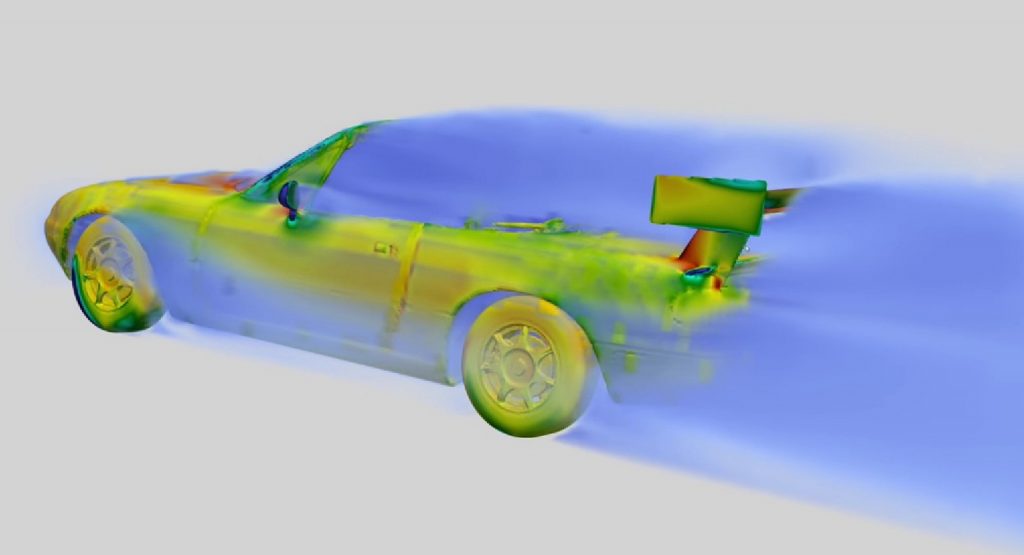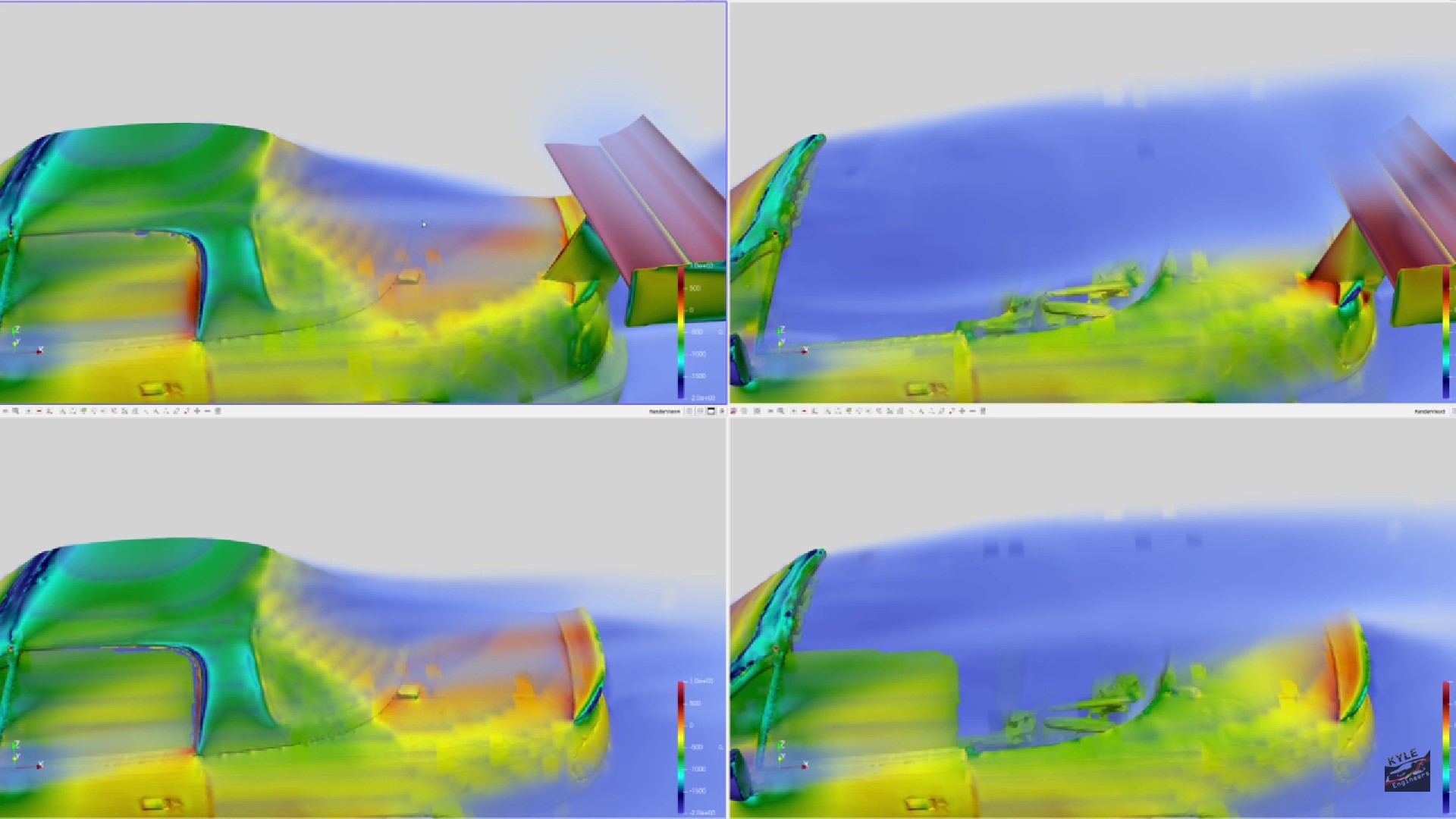There was a time when the amateur racer’s preferred means of motorsport was a roadster. But as the science of aerodynamics has revealed itself to us (and the science of safety) roadsters have fallen out of favor.
YouTube’s KYLE.ENGINEERS has endeavored to answer the question of why you don’t often see a big wing on the back of a convertible in motorsports, or at least why you don’t see them with the top down.
To demonstrate why driving with the top down renders a big rear wing somewhat useless, he used the example of a first-generation Mazda MX-5 Miata, exactly the type of car an amateur might consider improving.
Read Also: Will A Less Inflated Road Tire Get You Down The Drag Strip Faster?
With CFD software, he shows how the transit of the air over the vehicle is affected by the presence of a roof and how, with it down, the wing is being starved of airflow.
“Now, I’ve fitted out this car with a very wide wing on the back of it, much wider than any sane person would put on an MX-5 and you can see that even though my wing is super wide to try and get out any sort of central effect of the cockpit the downforce loss is massive,” explains host Kyle Forster, a former F1 aerodynamicist.
Indeed, a pressure plot over the vehicle’s surface shows how taking the roof off takes much of the pressure off of the wing, preventing it from pushing down on it.
“It’s when you look underneath the car that you see the biggest differences, though,” he says. “This whole center section of the wing is generating almost no load in the roof off case whereas, in the roof on case, we’re generating a ton of load through that central portion.”
As a result, the winged car actually generates less drag with the roof off than it does with it on. Certainly, the wing could be raised higher, like it was in the early days of Formula 1’s exploration into aerodynamics, but simply affixing the roof on an MX-5 solves the problem more elegantly.





